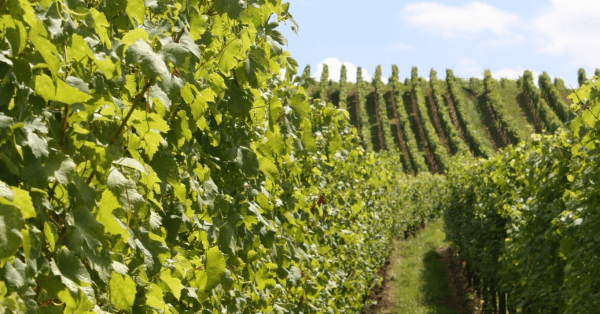
What is “terroir”?
The land in the Bordeaux wine region is very varied, offering a large variety of soils and different climatic conditions favorable to different grape varieties. Generally speaking, the terroirs can be broken down into Left Bank, Right Bank, and also Entre-Deux-Mers.
The River Garonne runs through the city of Bordeaux, and the Left Bank indicates the appellations to the left of the river, and the Right Bank those appellations on the right of the Dordogne river. Entre-Deux-Mers (‘between-two-seas’) is the area to the east of Bordeaux city, in between the tidal tributary Rivers Garonne and Dordogne, which forms an upside-down Y-shape, before the rivers converge and become the River Gironde.
It should be noted that although there are general characteristics for each of these areas, the quality and type of land and soil varies from vineyard to vineyard, and a winery’s vineyards might consist of different parcels of land of different characteristics and quality.
Because of this, some chateaux produce first wines made of their premium grapes, with second wines made from the harvest that didn’t quite make the grade – although still very good quality – or perhaps from plots with different qualities, hence some wineries make some of their wines, in relatively small batches, on a ‘parcel-by-parcel’ basis.
Left Bank
Gravel-based terroirs dominate the Left Bank regions of Médoc and Graves, generally speaking. In fact, Graves is named after the gravel soil type. Gravel soils allow for excellent drainage and also encourage the roots to grow deeply seeking nourishment. Although the soils may be mostly gravel, they might be on a bed of limestone, clay or sandstone. The slopes on which the vines are planted also provide the conditions for good drainage. The gravel also lends itself to the minerality of the wines produced here. These conditions, and the grapes planted to best suit them, result in wines higher in tannins, acidity and alcohol.
We’ll tell you how the type of terroir impacts on the types of grape varieties that are planted in part two of this article, next week, so stay tuned!
Right Bank
Broadly speaking, the terroir in the Right Bank regions of The Libournais, and Blaye and Bourg, is dominated mainly by clay and limestone. Clay soil retains water and can restrict the growth of vine roots, unless mixed with other soils, which is where the limestone comes in. The limestone is alkaline, which tends to result in grapes with higher acidity levels.
Entre-Deux-Mers
The soils between the tidal rivers Garonne and Dordogne are mainly clay and sand alluvial soils, although there are some limestone and gravelly parcels of land in the north. Entre-Deux-Mers is the largest appellation in the Gironde, covered by gently rolling hills (from 10 to 100 meters above sea level), although only around half of the area is planted to vines, much of the rest is forested or used for other agricultural purposes. The soils here lack some of the minerality that adds extra dimensions and complexity to wines of the Left Bank and Right Bank.
The cooler terroir was best suited to growing white grapes and, historically, only white wines could be called Entre-Deux-Mers, with the area’s red wines labeled Bordeaux or Bordeaux Supérieur. As red wines became more commercially popular in the mid-19th century, many of the area’s growers switched their vines and wine production. In recognition of this, the official governing body has announced that, starting from the 2023 harvest – ready for drinking from 2025 – red wines can be called Entre-Deux-Mers, providing they’re produced in line with new regulations.
Next week, in part two, we’ll go into more detail about which types of grapes are grown where, and why, and how it impacts on flavor and other characteristics.
In the meantime, if learning about the different terroirs has piqued your interest in the wide variety of Bordeaux wines and their varying characteristics, check out article about the official rankings / classifications of Bordeaux wines these areas and how our local bilingual guides can help you visit wineries and taste their wines. Let Bordeaux With Elodie know which areas and appellations you’d like to visit and we can create unique private wine tours and wine-tastings for you.

